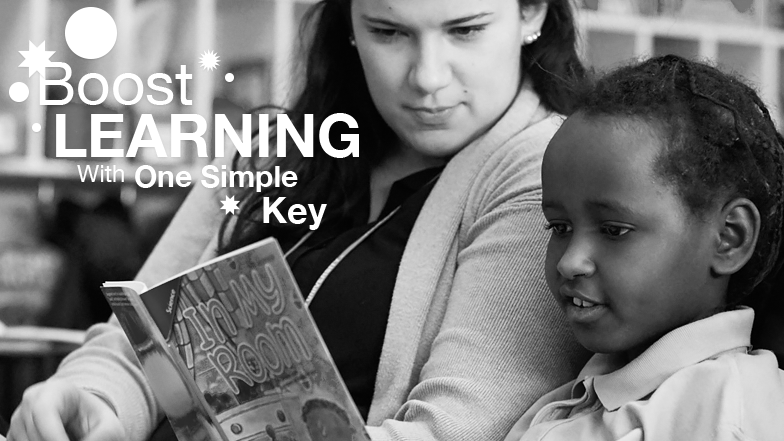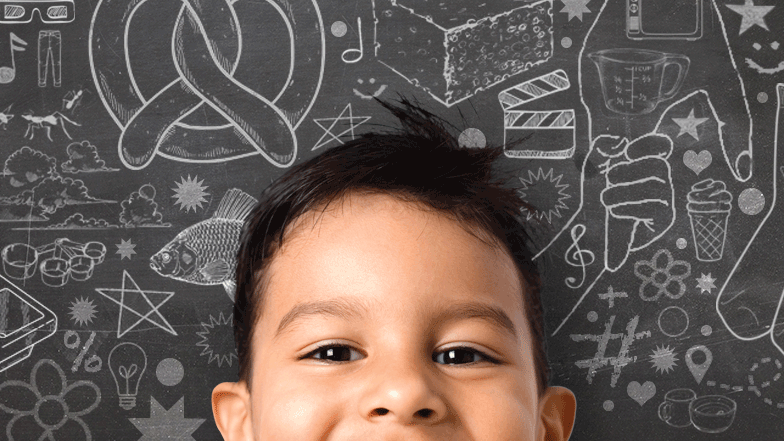What is "Blended Learning"?
Amber Brandt
Amber Brandt
Amber is a StoryBrand certified copywriter and mom. Her goal is to create engaging articles that educate and inspire.
Articles by Amber
-
Five Important Conversations to Kick Off a New School Year
Published: Jun 25, 2024
-
4 Ways to Combat the Summer (Learning) Slide
Published: Jun 11, 2024
-
First Day of School: Tips for a Smooth Start
Published: May 09, 2024
-
Healthy and Warm Food Ideas for Cold Days
Published: Mar 19, 2024
If you’ve heard the term “blended learning” and wondered what it meant, you’re not alone. In fact, this concept is new for many parents and even teachers!
Blended learning - sometimes also referred to as individualized learning or personalized teaching - is an approach that mixes technology with traditional face-to-face learning. For many of us, our school experience with computers meant little more than avoiding dysentery on the Oregon Trail or a fifth-hour class where we learned typing and creating simple spreadsheets. “Computers” was a class we “took” rather than an everyday building block fundamental to the way we learned.
One of the best things about individualized learning is that it empowers teachers to create customized learning plans for each student based on their individual strengths and areas of improvement. It also allows for greater flexibility on the time, pace and place students learn. At first glance it may seem like students are simply completing lessons at the computer - but the program actually gathers valuable information and transmits it back to your child’s teacher. With this real-time wealth of information, she can truly customize learning to your child’s needs.
Here are some more in-depth reasons we practice (and appreciate) blended learning:
Interlacing media together makes students stronger. Everyone has a predominant way they learn - some are more visual, some learn best by listening and others by doing. Incorporating more than one teaching approach into the classroom helps teachers fire on all cylinders. By weaving together traditional classroom learning and virtual educational media, teachers can provide more well-rounded instruction, and online components create greater dimensions to the material. This adds up to greater mastery within the classroom.
There’s less capacity to slip through the cracks. Blended learning helps to pinpoint where each student is on their educational path. Teachers are given the ability to create appropriate challenges based on each child’s unique ability. For instance, if a student is exceptionally strong in language skills but weaker in math, a teacher can craft greater opportunities to move beyond their average grade level of material for English, while simultaneously receiving remediation to bring their math skills up. This model varies for each student making it highly fluid and individualized.
Blended learning encourages greater classroom collaboration. In traditional learning, student collaboration happened only during class discussions or small group work sessions. Blended learning adds online group work, online discussions, email, instant messages, blogs and electronic portfolios to the mix.
Creativity explodes. Remember when your classroom presentation meant dot-matrix pages in a plastic sleeve? Today’s classrooms go far beyond paper and pencil. Blended learning allows students to create live presentations, labs, performances and exhibits of skill through models, works of art and posters. Teachers also have greater capacity for disseminating information and testing too, by incorporating online surveys and quizzes, assignments that include slideshows, photographs and even videos.
At National Heritage Academies, we understand that as technology develops, so must our approach to education. (It needs to progress!) And with so many options and possibilities within reach, it’s wise for educators to consider how they can best provide an educational approach that’s engaging, competitive and fun - providing our students with the best chance for a bright future and inspiring them to become life long learners.
Blended learning - sometimes also referred to as individualized learning or personalized teaching - is an approach that mixes technology with traditional face-to-face learning. For many of us, our school experience with computers meant little more than avoiding dysentery on the Oregon Trail or a fifth-hour class where we learned typing and creating simple spreadsheets. “Computers” was a class we “took” rather than an everyday building block fundamental to the way we learned.
One of the best things about individualized learning is that it empowers teachers to create customized learning plans for each student based on their individual strengths and areas of improvement. It also allows for greater flexibility on the time, pace and place students learn. At first glance it may seem like students are simply completing lessons at the computer - but the program actually gathers valuable information and transmits it back to your child’s teacher. With this real-time wealth of information, she can truly customize learning to your child’s needs.
Here are some more in-depth reasons we practice (and appreciate) blended learning:
Interlacing media together makes students stronger. Everyone has a predominant way they learn - some are more visual, some learn best by listening and others by doing. Incorporating more than one teaching approach into the classroom helps teachers fire on all cylinders. By weaving together traditional classroom learning and virtual educational media, teachers can provide more well-rounded instruction, and online components create greater dimensions to the material. This adds up to greater mastery within the classroom.
There’s less capacity to slip through the cracks. Blended learning helps to pinpoint where each student is on their educational path. Teachers are given the ability to create appropriate challenges based on each child’s unique ability. For instance, if a student is exceptionally strong in language skills but weaker in math, a teacher can craft greater opportunities to move beyond their average grade level of material for English, while simultaneously receiving remediation to bring their math skills up. This model varies for each student making it highly fluid and individualized.
Blended learning encourages greater classroom collaboration. In traditional learning, student collaboration happened only during class discussions or small group work sessions. Blended learning adds online group work, online discussions, email, instant messages, blogs and electronic portfolios to the mix.
Creativity explodes. Remember when your classroom presentation meant dot-matrix pages in a plastic sleeve? Today’s classrooms go far beyond paper and pencil. Blended learning allows students to create live presentations, labs, performances and exhibits of skill through models, works of art and posters. Teachers also have greater capacity for disseminating information and testing too, by incorporating online surveys and quizzes, assignments that include slideshows, photographs and even videos.
At National Heritage Academies, we understand that as technology develops, so must our approach to education. (It needs to progress!) And with so many options and possibilities within reach, it’s wise for educators to consider how they can best provide an educational approach that’s engaging, competitive and fun - providing our students with the best chance for a bright future and inspiring them to become life long learners.


